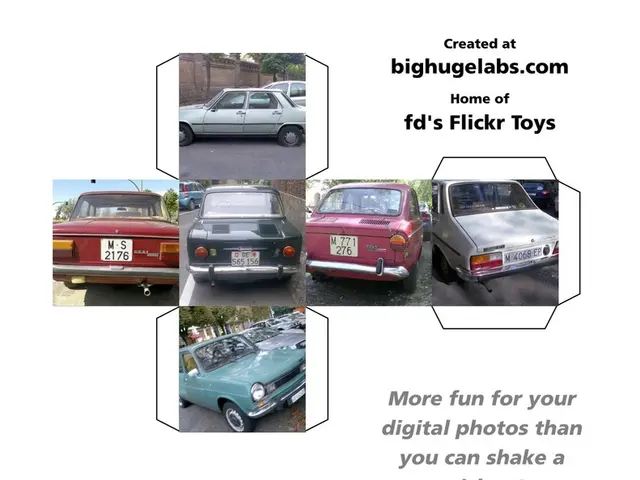Groundbreaking AI Interactions with Dolphins Beneath the Ocean Depths
Unraveling the Mystery of Dolphin Communication: Introducing DolphinGemma
For decades, marine biologists have been fascinated by the intricate communication systems of dolphins, filled with clicks, whistles, and burst pulses. However, truly decoding these marine mammals' secrets has remained elusive. But that changes now!
Meet DolphinGemma, the groundbreaking AI model developed by Google, Georgia Tech, and the Wild Dolphin Project (WDP). This revolutionary tool has the potential to bridge the gap between humans and dolphins like never before, thanks to its ability to recognize, interpret, and generate dolphin vocalizations.
The Quest for a Common Language
Understanding the language of another species is more than just listening; it involves analyzing context, history, and behavior. For over four decades, the WDP has been studying a community of wild Atlantic spotted dolphins (Stenella frontalis) in the Bahamas, gathering a wealth of audio, video, and individual dolphin behavior insights. This unique dataset forms the foundation for training AI systems like DolphinGemma.
WDP's approach is unique: non-invasive, long-term, and deeply contextual. Researchers have documented various communication behaviors, such as signature whistles, burst-pulse squawks, and click buzzes. These elaborate acoustic signals are not isolated; they are closely linked to social dynamics, environmental cues, and individual identities.
The Power of AI
Developed by Google, DolphinGemma is a 400-million parameter AI model designed for audio-in, audio-out communication modeling. It combines Google's SoundStream tokenizer with an architecture similar to language models, allowing it to efficiently compress, analyze, and generate complex sound patterns.
What makes DolphinGemma groundbreaking is its capacity to understand and replicate the structure of dolphin vocalizations, offering:
- Pattern recognition within sequences of natural dolphin calls
- Generation of novel dolphin-like sound sequences
- Prediction of subsequent calls in a vocal series
In essence, DolphinGemma functions like a large language model but for dolphin audio, predicting the "next sound" based on prior acoustic context.
Empowering Field Research
The Wild Dolphin Project is now integrating DolphinGemma into its 2025 field season, using Google Pixel phones equipped with the model to analyze dolphin vocalizations in real-time. Preliminary results suggest that DolphinGemma can significantly accelerate researchers' ability to identify recurring sound clusters, map acoustic structures to social interactions, and detect anomalies in vocal patterns.
As the model refines its understanding, researchers envision expanding the shared vocabulary by introducing synthetic whistles that refer to objects dolphins already recognize, such as seagrass, scarves, or play items.
Synergy with CHAT System
DolphinGemma is also being integrated into the CHAT (Cetacean Hearing Augmentation Telemetry) system developed in partnership with Georgia Tech. Unlike DolphinGemma, CHAT doesn't aim to decipher dolphin language entirely; instead, it enables two-way interaction using a controlled set of synthetic sounds.
How CHAT Works:
- Synthetic Whistles: These are artificial sounds created by the system, each tied to a specific object.
- Recognition and Feedback: If a dolphin mimics a whistle, researchers receive alerts via underwater bone-conduction headphones.
- Reinforcement: The correct item is then offered to the dolphin, reinforcing the association.
CHAT has been tested on previous Pixel models and will soon transition to Google Pixel 9, which enables real-time processing of both deep learning models and signal analysis simultaneously - all in a compact, waterproof design.
Empowering Global Research
In the spirit of open science, Google plans to release DolphinGemma as an open model by summer 2025. While currently trained on Atlantic spotted dolphin data, it has potential for adaptation to other cetacean species with fine-tuning.
This open model will allow:
- Independent marine labs to analyze their own acoustic data
- Cross-species research on marine communication
- Academic collaboration to refine interspecies AI tools
The Brink of Interspecies Communication
The dream of communicating with dolphins has long captivated scientists, storytellers, and ocean lovers. While we are still far from fluent conversations, tools like DolphinGemma may one day enable:
- Understanding the emotional or social context of dolphin communication
- Predicting group behavior based on vocal cues
- Developing symbolic languages for shared understanding
As DolphinGemma's generative capabilities grow, the potential for dolphin-to-human communication loops emerges, where patterns from both parties can be reciprocated and interpreted in real-time.
Ethical Considerations
As with any advancement in AI and animal research, ethical practices must guide development:
- All interactions with dolphins should remain non-invasive and respectful.
- No attempts should be made to domesticate or manipulate behavior outside the natural context.
- Transparency is essential to ensure scientific integrity.
WDP's guiding principle, "In Their World, On Their Terms," remains vital to its work.
A New Era of Collaboration
DolphinGemma is more than just a research tool - it's a bridge between species, developed through human ingenuity and deep respect for marine life. With the combined effort of the Wild Dolphin Project, the engineering brilliance of Georgia Tech, and the technological might of Google, we are stepping towards a momentous milestone.
We are no longer just observers - we are learning. And perhaps one day, we will respond, not as passive listeners, but as respectful participants in one of the most sophisticated natural communication systems on Earth.
Stay tuned this summer as DolphinGemma is released to the global research community. The ocean is speaking - and now, we might just start listening back.
Connected Reading:
- Artificial Muscle Technology with Robotic Arm
- AutoScience Carl: The AI Revolution in Academic Research
- Nokia MX Context: AI-Powered Contextual Awareness
- Is AI Out of Control? The AI Control Problem
- The groundbreaking AI model, DolphinGemma, developed by Google, Georgia Tech, and the Wild Dolphin Project, uses deep learning to understand and replicate the structure of dolphin vocalizations, potentially enabling humans to communicate with dolphins more effectively.
- In the future, research efforts in environmental science and climate-change studies may benefit from the integration of artificial intelligence and technology, as demonstrated by the development and application of DolphinGemma to unravel the complexities of dolphin communication.
- As the Wild Dolphin Project refines the use of DolphinGemma in their field research, they envision collaborating with other marine labs to analyze their acoustic data, fostering cross-species research on marine communication and contributing to the development of advanced interspecies AI tools.








